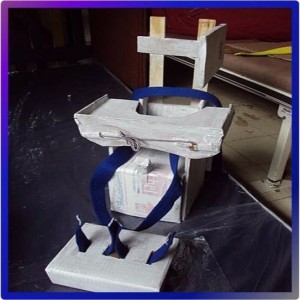Reflections from Andrew's First Rehabilitation and Cardboard Construction Workshop
/It’s hard to put into words how it feels to hear that most of the adults who attended the first workshop on rehabilitation and cardboard construction are already talking about coming back for the advanced session. Around 15 adults took part both days, and I can surely say that the “taller” was a great success.
My initial intention was to teach participants how to take a simple history, assess passive range of motion and strength, and to build a small box, followed by balance assessment, assistance requirements and making the necessary equipment from our cardboard supplies on the second day. But we had to adapt some training along the way – we discovered that some participants could not read or write, while others were writing down every word I said. As we determined the character of the class, I realized that we should focus on the skills learned in day one in more detail, and save day two for the advanced session. This meant we were able to devote time to assessing passive range of motion and strength testing at different joints.
The cardboard experience was interesting, to say the least! We had asked everyone to bring in 15-20 pieces of cardboard, but most people turned up with two. Fortunately the first day we were only making single-layered small boxes, and so in preparation for the second day we went to the super market and picked up a trunk full of cardboard. When we started on day two I asked everyone to glue pieces together to form multiple-layer pieces which we would use for our actual equipment (kind of like a cardboard version of plywood). Some planks were three layers and others were 6-9 layers, and in the end we had six planks for just over two teams to each make an inclined seat insert that would change the angle of a seat for a child with hypotonia.
I am very excited to try a new approach for learning with the second introductory class. My goal is to have them walk away with simple but applicable concepts, and more importantly to foster a class where participants can develop confidence with touching each other and thinking about the movement of the muscles and joints of their bodies and others, regardless of their ability to talk or write about it.
I want to give a special thanks Jonathan for translating for me when things got a bit hairy, and Gretchen, Karen, and Rosa for working alongside me with the individual groups.


